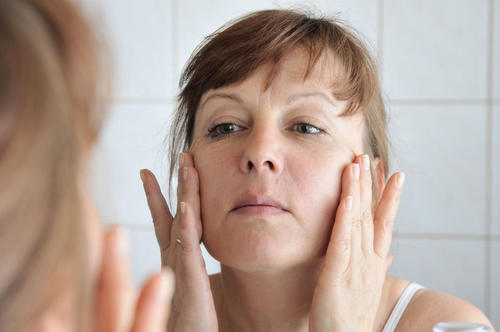Testing Cells instead of Mice
Researchers at Freie Universität Berlin investigate alternatives to animal testing
Jan 02, 2012
Cosmetics without animal testing: The efficacy and safety of many drugs and cosmetic products for skin diseases can be tested without using animals.
Image Credit: Andy Nowack / fotolia.com
“There is no other country in the world that does as much to develop substitute methods for animal testing as Germany,” says Professor Horst Spielmann of the Institute of Pharmacy at Freie Universität Berlin. He should know. Spielmann spent 20 years as head of the Center for Documentation and Evaluation of Alternative Methods to Animal Experiments (Zentralstelle zur Erfassung und Bewertung von Ersatz- und Ergänzungsmethoden zum Tierversuch, ZEBET) at the German Federal Institute for Risk Assessment (BfR), an institution like no other in the world, dedicated to investigating methods that can be used to determine that pharmaceuticals, foods, and chemicals pose no threat to human health – without causing suffering to animal subjects.
Spielmann, who holds a degree in medicine, also views himself as a “scientific diplomat,” since he is the coordinator of the EU project “AXLR8,” whose goal is to promote research on alternative testing methods within Europe and in coordination with the U.S. and Japan. “Since 2004, it has been accepted practice worldwide to perform what we call phototoxicity tests on mouse fibroblasts – meaning connective tissue cells taken from the animals – and no longer on mice or rats themselves,” Spielmann says.
This gives researchers a reliable way to test common side effects of antibiotics, such as reddening of the skin on UV exposure, without experimenting on animals. But it often takes years for these kinds of methods to be validated through experiments and acknowledged and approved around the world. One of the goals of AXLR8, Spielmann says, is just what its name indicates: to speed up these processes. “The biggest breakthrough for us came when we were allowed to work with human cells and tissue, or with what we call reconstructed organs, which are developed from human cells through biotechnology and can sometimes be highly complex, and no longer with rats and mice,” he says.
Pharmacologist and professor Monika Schäfer-Korting leads a working group at the Institute of Pharmacy, studying the development of alternative methods not only for safety testing, but also for improved development of pharmaceuticals to treat skin diseases. “The skin is one of the three routes toxins can take to enter the human body,” Schäfer-Korting says. For example, 90 percent of pesticides absorbed into the body come through the skin, not through the lungs or the gastrointestinal tract. “We are looking at how substances are absorbed into the skin, and moreover at whether, and if so how, they are metabolized in the deeper layers of the skin,” she explains.
To better understand these kinds of effects, the researchers at Freie Universität are working with skin reconstructed in the lab as a replacement for animal testing. The tissue is cultured from human skin cells on supporting membranes; the cells themselves come from “residual skin” left over after surgery. These kinds of models can be used to test various active ingredients for potential harm at the cellular level. If a toxin or drug is supposed to work in a particular place inside the body, it must first penetrate the stratum corneum, the skin’s protective outermost layer.
This barrier, which protects us from toxins in our surroundings, is a major hurdle for pharmaceuticals, but it can be overcome with appropriate “transporters.” For example, drugs can be integrated into lipid nanoparticles, tiny spheres of fat just 180 nanometers in diameter (one nanometer is equal to one-billionth of one meter), which easily penetrate the stratum corneum, efficiently delivering the medications into the skin.
With support from the German Federal Ministry of Education and Research (BMBF), researchers at Freie Universität Berlin and ZEBET are working together to develop tests that use reconstructed skin to measure how pharmaceuticals or toxins are absorbed and metabolized.
And yet, the number of tests conducted on animals is still rising – because, for instance, genetically modified mice are being used as models so that scientists can better understand hereditary diseases and develop new therapies. That fact gave pharmaceutical researchers at Freie Universität the idea of transferring these kinds of disease models to the cellular level. “By turning various genes within skin cell models on and off, we can produce diseased skin that mimics eczema, for instance,” explains Schäfer-Korting.
This “diseased” skin is then used to test the effects of suitable drugs, such as cortisone. It is now also possible to “build” these kinds of models for skin tumors or skin infections by cultivating tumor cells or microorganisms along with the skin. At Freie Universität Berlin, these kinds of models are being used in work toward developing new tumor treatments, for example.
The researchers already hold a patent for one such medication. The new methods, says Schäfer-Korting, can significantly reduce the number of tests performed on animals. “But we can’t replace them completely, at least not yet,” she says, adding that the routes the substances take as they travel through the human body are too complex. “And before a new substance is used on people for the first time, it has to be tested on animals.”
Further Information
-
Prof. Dr. Monika Schäfer-Korting, Institute of Pharmacy, Freie Universität Berlin, Tel.: +49 (0)30 838-53284 Email: msk@zedat.fu-berlin.de
-
Prof. Horst Spielmann, Institute of Pharmacy, Freie Universität Berlin, Tel.: +49 (0)30 / 838-53219, Email: horst.spielmann@fu-berlin.de

